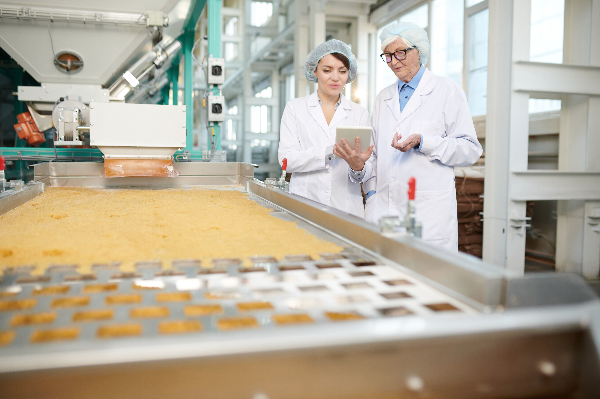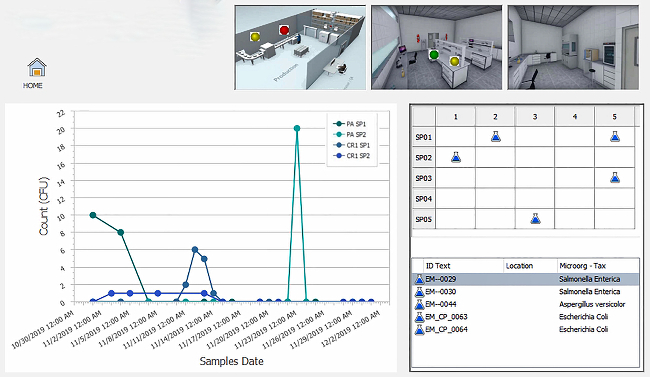The food industry is under intense scrutiny, with concerns about food safety and quality making headlines around the world. Today, the industry faces unprecedented challenges when it comes to ensuring the safety and security of the global food supply chain. Leaders need to manage known concerns such as foodborne pathogens, food fraud and contamination, as well as emerging challenges, including ingredient scarcity and changes in consumer preferences that have created the need to reformulate recipes quickly, source from new suppliers, and increase imports—all of which contribute to increased risks.
Due to climate change and shifting environmental factors we are seeing crop failures, and new bacteria and antimicrobial resistance to foodborne pathogens, which increase the cost of managing food safety. As consumers demand greater transparency and look to place more trust in the food chain, changing buyer habits further compound these challenges by putting a greater onus on food handling, production, manufacturing, and supply companies to provide more education to consumers about foodborne illnesses.
Recalls are the biggest threat to a brand’s profitability and reputation, and this threat is growing. According to FDA reports, recalls increased by 700% in 2022, with undeclared allergens being the leading cause for the last five years. The Food Safety Authority in the UK tells a similar story with undeclared allergens accounting for 84 of the 150 recalls last year, followed by salmonella, listeria, and foreign body contamination.
As food regulations become more complex to navigate, it is now essential to reassess the industry’s approach to managing risk. Protocols such as VACCP and TACCP are regularly used as part of a solid food defense program to identify risks. But the traditional approach of relying solely on regulations and compliance-based systems is no longer sufficient to ensure food safety in today’s complex, volatile and globalized food supply chains. Now is the time to implement a more holistic and dynamic risk-based approach to managing food safety more effectively.
What Is a Risk-Based Approach to Food Safety?
A risk-based approach allows the industry to proactively identify potential food safety risks and take appropriate measures to mitigate them, rather than simply responding to problems as they arise. For example, mature food businesses are building on food safety management systems with food safety audits to identify and manage risk to stay ahead of the curve. A risk-based approach helps underpin the continuous improvement process and, by doing so, demonstrates the ability of a company to be a trusted partner in the global food supply chain.
One of the key aspects of a risk-based approach to managing food safety is proactive intervention and control, using relevant data analysis stored in a cloud-based platform. All stakeholders need access to accurate and actionable data during risk assessment and management to make informed decisions. However, there are many barriers to accessing risk-related data for smaller operators, many of which are still working in a largely manual way.
Data must be collated from across the business, and multiple data sources need to be collected and appropriately analyzed to protect both the brand and public health. It is estimated that we are at least 10 years away from any type of interoperability of industry data, which will allow better transparency and visibility of risk across the supply chain.
Stay Ahead of Emerging Legislation
Visibility of the emerging legislation in source countries of ingredients and raw materials is critical, as are contingency sourcing plans and good risk analysis protocols. Food integrity needs to be a standing agenda point as part of internal meetings, and ESG policies need to be visibly delivered. The industry needs to ensure that it is aware of changes in regulations that could impact the safety and quality of its products through horizon scanning tools. There is also an onus on the industry to make its risk assessments more dynamic to incorporate change at a frequency that is appropriate for risk evaluation with effective crisis management plans in place.
Supply Chain Management Is Critical
Sourcing raw materials and ingredients across supply chains requires best practices. You must ensure that your supply chain partners and suppliers know how to manage a crisis and that emerging risks are shared across the supply chain. Quality, food safety, and regulatory divisions must actively participate in risk assessments and receive relevant data and communication. ESG policies also need to include the supply chain; leaders in this space need to be able to verify that these policies are delivering.
Marketing claims must be vetted and aligned with regulations and markets where products are sold. Procurement, supply chain and communication, and external partners such as NGOs and consumer associations are important groups to involve in risk profiling and ongoing management. While managing emerging issues and horizon scanning is critical, it is also important to remain vigilant on the basics, as most food safety and allergen incidents are known risks.
Detecting Food Fraud
Opportunistic food fraud cases are rising in the high food inflation market, with recent examples including everything from adulterated honey to the mislabeling of beef. To deter food fraud, businesses need to focus on risk-based auditing and testing through sampling programs. Knowing your supply chain, shopping around safely, being vigilant about ingredients and specifications, utilizing training, and building awareness and readiness are imperative to deter food fraud and create a culture of confidence and greater food safety.
Think Differently About Managing Risk
Now is the time for the food industry to reassess its approach to managing risk. A risk-based approach focusing on prevention, continuous improvement, and stakeholder collaboration is necessary to ensure a safe and secure food supply chain in an increasingly complex and challenging environment. The industry must prioritize data accessibility and accuracy, have a crisis management plan, be aware of emerging legislation, and include ESG policies in its risk management strategies. By focusing on risk-based auditing and testing, the industry can deter food fraud and create a culture of confidence.
The probability of eliminating all risks is very low, so the food industry must pivot and be agile to challenge the traditional approaches to managing food safety. It is time to think differently about managing risk and adopt new practices that promote prevention and collaboration.










